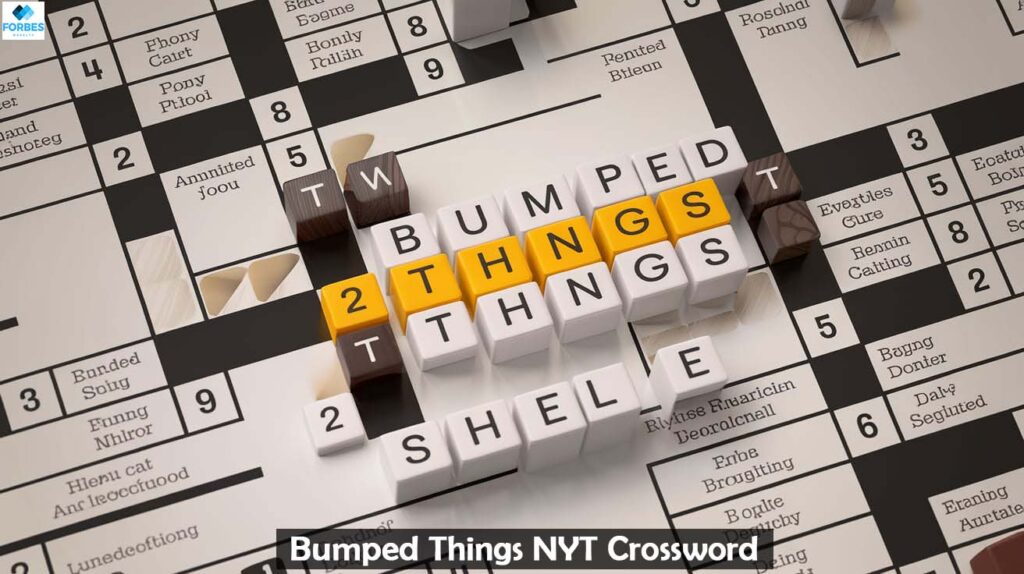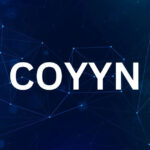Bumped Things NYT Crossword The New York Times crossword puzzle, which is widely accepted as one of the well known and most difficult and fulfilling puzzles to the enthusiasts, has got several compelling clues that are enough to make adult solvers scratch their heads. Specifically, the common clues that have been challenged by many are the “bumped things”. If you have stumbled across this term and wondered what on earth it meant while doing the crossword, then feel free to relax as we explain the term to you. Here, in this article we will explain what the meaning behind the idiom bumped things NYT crossword is, how we can solve it, and how you can approach a puzzle game like this in the future.
What Does the Term Bumped Things Exactly Mean in Relation to the Production of a Crossword Puzzle?
However, before we proceed into solving tips, it is worthwhile to understand the term Bumped things NYT crossword puzzles there are prompts that employ homophonic or other similar words as a way of pointing to the correct solution. The term “bumped things” in the case of crossword means objects or things that have been, pushed, shifted or moved in some manner. It can be materialistic things like a car or a box; it can also be non-materialistic things like priorities or ideas.
To better understand how “bumped things” can be used in crossword puzzles, consider the following example:
Example of a “Bumped Things” Clue:
- Clue: Bumped things
- Answer: Cars
In this case the solution cars are from the notion of applying force through a car, either by inference thinking tom-tom head on collision, of equal cars or by overt rudeness thinking tom-tom head on collision of unequal cars on the road. Here, ‘bumped’ means to have made contact physically while ‘things’ are used to mean the items that are being referred to as being bumped.
In crossword puzzles, the word “bumped” refers to others such as colliding, nudging or even jostling. Of course, it is crucial to have knowledge of such subtleties because they are really useful while solving the crossword.
Common Interpretations of “Bumped Things NYT Crossword Puzzles:
1. Physical Objects in Motion:They include such phrases as “bumped things,” and in many puzzles these can literally mean things which are shifted, struck, or shoved. For instance, in a clue — car accident or in a room – answers may be cars or people respectively.
2. Metaphorical Objects: Occasionally, “bumped things” may include ideas and metaphorical objects that have either been removed or shifted. For instance, “bumped priorities” manifesto might refer to change of priorities or change of schedules.
3. Idiomatic Usage: The term “bumped” might sometimes refer to items or conditions which might have been changed or interfered with in an underlying manner. For example, “bumped” might mean that a schedule has been altered, a routine has been changed.
How to Attempt NYT Crossword Clues: “Bumped Things NYT Crossword”
Each clue when solving a crossword puzzle should be handled with precision and concentration. For clues involving the term bumped things NYT crossword, you can follow these steps to increase your chances of success:
Step 1: Determine the Length of the Answer
The first action to take when faced with a crossword clue such as ‘bumped things,’ is to establish the number of characters.
Crossword puzzles can also be a great way to gain important information, especially if some of the squares are filled in due to the fact that the two answers for which they are a part of are known.
For example, if the clue of the clue says “Bumped Things NYT Crossword” and the number is “4 letters”, you start to think of what words could be 4 letters long and associated with “bumped”. It could be “cars” if you are thinking about vehicles that have a tendency to crash, “balls” if you are thinking of sports where players have to physically bang the balls, or “kids” in areas that everyday people brush past one another.

Step 2: Analyze Wordplay and Synonyms
Since crossword clues are word-based, you really have to think creatively. If the term “bumped things” doesn’t help you to classify this term in some definite category or doesn’t give any clear meaning, maybe, you should try to search for other meanings of the word “bumped,” or for the words which are similar in meaning to this one.
“Bumped Things NYT Crossword” here means colliding, knocking or displaced.
Items could be anything tangible or even intangible; in other contexts ‘things’ has been used in a rather ambiguous way.
From here, start generating simple words you can consequently to these meanings. For example in doing a crossword in which the answer to a clue such as ‘car accident’ ‘bumped’ could mean cars or fender benders. If the thoughts are in terms of people or items in a crowded environment, the “bumped” could either be the “people, the “bags” or even the “chairs.”
Step 3: Use cross-checking after completing the environment scan matrix to fill in the grid.
When you think you have 2-3 correct answers, try to fit it into the grid with the picture that comes to your mind. Although, by cross-checking other clues, it will become easy for you to figure whether or not your answers are correct. For instance, let’s say you have solved two of the adjacent clues and see that some of the letters don’t quite fit your potential answer for ‘bumped things,’ these letters will be a pretty good clue that you need to rethink your choice.
When you gradually put letters into the blank spaces you will frequently observe that the solution to bumped things NYT crossword is much more apparent. Stay on using the process of elimination and be ready to reconsider what you think about the clue.
Step 4: Keep Practicing and Learning
This is an indication that practicing crosswords can actually make the task so much easier. Eventually it becomes easier to assess what kind of language is expressed in the clue and what kind of answer the show’s producers might be anticipating. When apprehended with special or even odd hints, then one should not be afraid. Continue to use the strategies and make new gains regarding the terms, sources, and poetic constructs employed.
Other Tips on NYT Crossword Puzzles
Here are some general tips that can help you tackle not only the “bumped things” clues but also other tricky crossword puzzles:
1. Start with the Easy Clues
Often, in crossword construction, few of the entries are less difficult compared to the rest of the words. Start with these that have easy solutions first so that you can get some letters for the harder ones.
2. Use Crossword Solving Tools
If you get stumped, there are clues that might help and crossword helpers or aids in the form of applications as well. They can assist you in how to look and search possible answers on a number of letters and clues.
3. Remember Some General Crossword Themes
This is normally true especially in Crossword puzzles where the questions are repeated with the different categories such as; celebrity news, history, pop-culture, puns among others. Knowing these patterns may help you to approach more difficult clues with more confidence.
4. Learn Crossword Shortcuts
Most of the time crossword clues are derived from regular abbreviations or simple crossword tricks that can easily be memorized, such as using ‘Abbr.’ to mean abbreviations, or ‘Old-style weight unit’ for ‘lbs’.
5. Stay Patient and Take Breaks
The areas in crossword puzzles may be small, but some of the clues may take longer to solve than the others. If for some reason you can’t find anything to eliminate, then simply take a break and return to the puzzle after some time. It can often make it easier to find solutions which would have been impossible to see beforehand.
Conclusion
Overall, it is quite possible to get a great deal of pleasure from solving the bumped things NYT crossword clue whether you are a professional or not. To make a solution not only for this specific clue but other similar ones in the future, it is good to know meanings of the word ‘bumped’ and ‘things’ and any other word that may be in the clue as well as looking at the common synonyms of those words. If you make it a habit to do crosswords regularly, a causal analysis of the wordplay, and use cross-checking methods, one is sure to get the best shot out of New York Times crossword. Happy solving!
Questions and Answers to Consider on DG APS
1. What does it mean to “bump things” in a crossword clue?
Bumped Things NYT Crossword In a crossword puzzle, shrines or what is bumped normally means objects that have been shifted or removed. This can mean tangible objects, for instance, vehicles in a car accident, or intangible objects including priorities or timetables converted or changed.
2. What steps can I take to increase the amount of crosswords I solve?
To solve more Bumped Things NYT Crossword more effectively, get to know abbreviations that can be commonly used in the crossword puzzles, and familiarize yourself with the wordplay used in the clues, It also helps to start from a less difficult clue. As time goes by, you will familiarise yourself with the language and pattern of the puzzle.
3. What other crossword clues can be categorized as a kind of “bumped things”?
Crossword puzzles with similar letters may use other words that are organized in similar manner, including colliding, nudging, or jostling. Search for activities that suggest objects are translated or in other words shifted in some manner.
4. Is the New York Times crossword hard to solve?
The New York Times Crossword puzzle changes its level of hardship depending on the day of the week it is in. The problems are often least complicated at the beginning of the week and gain complexity toward the weekend. However,.sulake, which sometimes puzzles even the cleverest of people, can easily be solved with a little practice, even the tougher l Founder
5. Will solving tools assist me with solving “bumped things”?
Indeed, there are crossword-solving aids which can give potential answers with reference to the number of letters that you have entered and the clues you have solved. But as a rule, it is suitable to attempt the solution of the puzzle independently, as it will help in honing skills.


